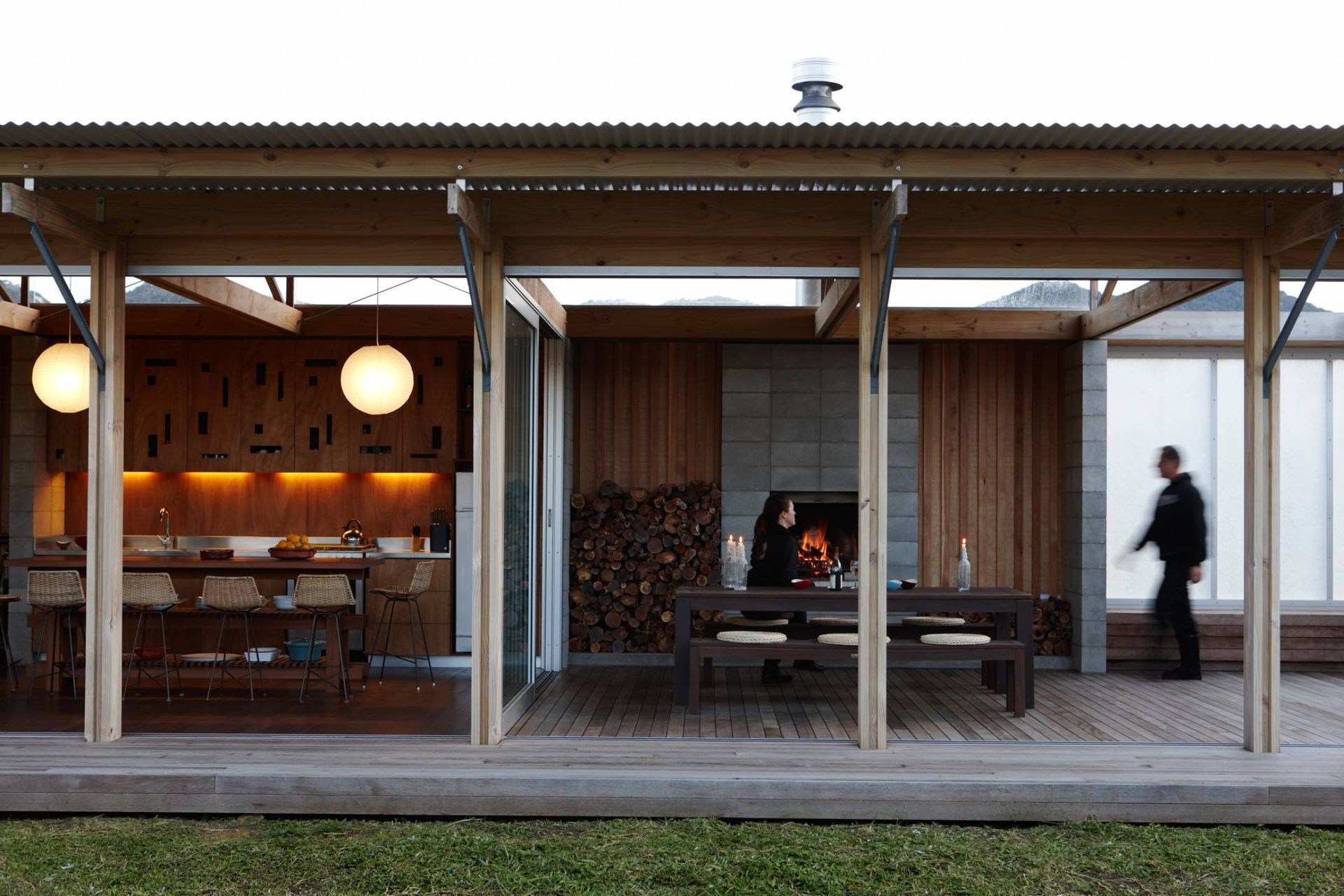Antithesis of convenience: the modern Kiwi bach
Written by
10 December 2017
•
4 min read

For most New Zealanders, the memories of staying in a structure by the beach are primitive. They’re surrounded in ritual and basic, rustic living. Whether that’s walking to the end of the property to use a long drop, sleeping in tiny spaces or clamouring around the day’s catch to see what’s for dinner, these basic parts of the summer holiday are the important ones; they are the daily rituals of people who are time rich.
While they are vital in the creation of a great bach, they are also the basis of the concept of relaxed living. These rituals existed, and do exist in contemporary baches, simply because modern conveniences are noticeably absent. Often, there is no television, dishwasher or appliances. And as a result, people congregate and are social, and they interact much more with nature and their surrounds.
“The characterisation of our memories of being at the bach as a child is really about living in deprivation without modern conveniences,” says Lance Herbst of Herbst Architects. “In a great bach, everything is stripped back to the bare minimum and based around ritual and interaction with others, and with nature.
“It’s a counterpoint to the essence of modernism where convenience is the marker of success. Baches are the antithesis of this; they are places where people are time rich and relaxed.”
For Lance, who specialises in bach design and has won numerous awards for his contemporary beachside dwellings, his belief is that a bach must be a simple, small structure, which provides its inhabitants with as much opportunity as possible to interact and play out the rituals that are a part of being on holiday.
“Being out on the water fishing, for example, is often a central part of a summer holiday. That means the boat will live somewhere, and part of the ritual around that will be making coffee in the mornings and packing the boat. At the end of the day it will be about bringing the boat back, people congregating to see the fish being unloaded and opening drinks. These are all social moments rich in interaction,” Lance says.
“Then there needs be to spaces that take into account how people cook that catch – not kitchens with sculleries and hidden areas, but open places where multiple people can cook together.”
That idea of rich social interaction and ritual extends to decisions around whether or not certain appliances are made part of a bach, such as a dishwasher. As soon as they are, a layer of the daily ritual is taken away and an element of social connection and congregation removed.
“A bach is place of ritual and delight rather than convenience. Achieving a structure that can provide for this is about looking at what people do during their days and how they socialise and interact.”
A bach is also a place where a connection with the outdoors is vital and, as such, often a central focus within the design is the bathroom or bathing area. “Generally, baches are places where long summer days are spent, and part of that is swimming, so it’s about keeping that engagement with nature there as much as possible and bathrooms become more outside spaces than inside ones with outdoor showers, for example.”
Materials too, become a significant part of promoting ritual and engagement. “In order to promote that interaction with nature, we generally use natural materials like timber and stone. We often also opt for fairly rough materials that are oiled or not finished with anything, because in those choices is an acceptance that the materials will get banged up and stained over time, and as they do it’s part of a growing of a patina that gives the bach its story in twenty years’ time.”
Within this realm, if heating is required, fires are almost always chosen over other methods because of the need for engagement and ritual, and covered outdoor deck areas become the living room rather than a traditional interior space.
Together, if well thought out and designed, these elements combine to create simple yet complex structures that enhance a richness of being, seldom found in modern urban homes of convenience.
“A bach is like wearing a pair of boardshorts rather than a suit,” Lance says. “You want to wear a bach like a comfortable piece of clothing and not be worried about stains or scratches.”
In structures like these, long summer days flow endlessly into periods of time uninhibited by modernism.
Visit ArchiPro here to peruse some of Herbst Architects’ award-winning beachside structures.


